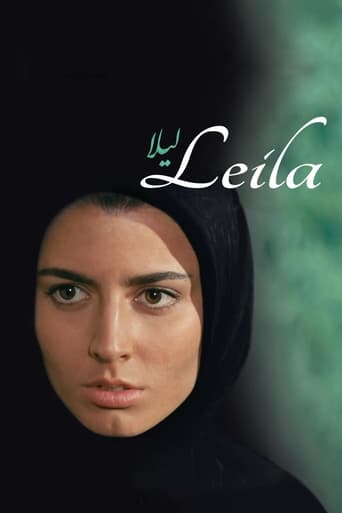nima_bordbar
This is not an entertaining film, and in truth, I am surprised by its popularity among typical audiences. It is a serious film, and a work of art, but fun is not to be found here. DO NOT see this film if you dislike feeling emotionally drained and ethically challenged, and DO NOT see it if you are very prone to boredom, or easily offended by sexual violence, substance abuse and the horror of daily life on the street.
George_Supreeth
When people speak of Dariush Mehrjui's films what comes. across most often is his ability to paint. complex relationships and emotions without skipping a beat in the film's rythm or pace. Sounds artsy right? But it's true. Leila is a movie with such compassion and tenderness that you can feel. your stomach knot with every event that Leila endures. The film is paced so well and ends so eloquently that (trust me) you don't want to be disturbed by any other sights or sounds for a long time after. Leila is a young iranian girl, in the a social throes, something that she has no choice about. Wish i could summarise the story, but saying anything will give away too much. Especially since the movie is comprised of a series of interlinked events, and any passage of time can only be measured by Leila's everyday agony.
shayok
Most Iranian movies I've seen so far seem to deal with simple emotions among poor people (e.g. boy looking for friend's house in the next village to return notebook). Leila's characters, freed from the struggle for survival, display a full range of human emotions and complexities. Brilliantly acted, scripted, edited.
Pro Jury
An untrue script ruins a tale of a young Persian husband & wife dealing with issues surrounding bossy in-laws and having their own children.LEILA is set in conservative Iran. Woman dress in black outer clothing head-to-toe. A man may marry and keep up to four wives. Reasonable viewers will make allowances for cultural differences when it comes to how bossy in-laws are tolerated. However, the having-children plot in LEILA is played out in a completely implausible manner.For one, the film's audience must accept that adopting a child or inseminating a young wife are less harmonious actions to a newlywed's continued happy home life than the notion of pushing a husband (who truly does not desire to remarry) to marry an additional wife for breeding purposes with the resulting children being emotionally commandeered by the first wife while the biological mother (second wife) still lives on in the home with no deep attachment to either children or husband.Second, there is a scene at an orphanage brimming with cute little children without mothers and fathers to care for them. The children are irresistibly cute and seemingly no young married couple with a speck of maternal-paternal instincts could leave without adopting at least two or three. However, Leila and her husband are utterly repulsed and uninterested.The husband is often as confused as the audience and Leila seems to have anxiety disorder and depression. As the movie progresses, the viewer starts to wonder if perhaps neither of these characters are fit to parent children.Leila and her husband are financial well off. They drive a new car, have nice new appliances in their home, and there seems to be no want for money. Reference is made to Leila's husband being employed in his family's business, however, not once does the viewer see the husband or any family member at work or mention one single aspect of their thriving business. Again, realism is lacking.Repeatedly, Leila's husband drops Leila off at the side of a busy street or random highway to aimlessly wander about the roadside until the husband drives back after his afternoon errands and picks her up. These bizarre occurrences are never explained but seem to serve as a plot device to gave a setting for discussing the personalities of potential second wives as each spousal candidate is interviewed.The audience in the movie house was laughing in the wrong places, shaking their heads and making murmurs of disbelief as the story was being revealed.Thanks to this film I learned that Iran has falling foliage, homes with completely modern kitchens, and that it is OK to give a conservative Islamic woman a pearl necklace. Watching the movie I also wondered, dressed in black from the top of the head, to toe, a string of white pearls would really stand out. Why have I never noticed such a thing on an Islamic woman ever before? Thoughts wander as the mind resists the story.

